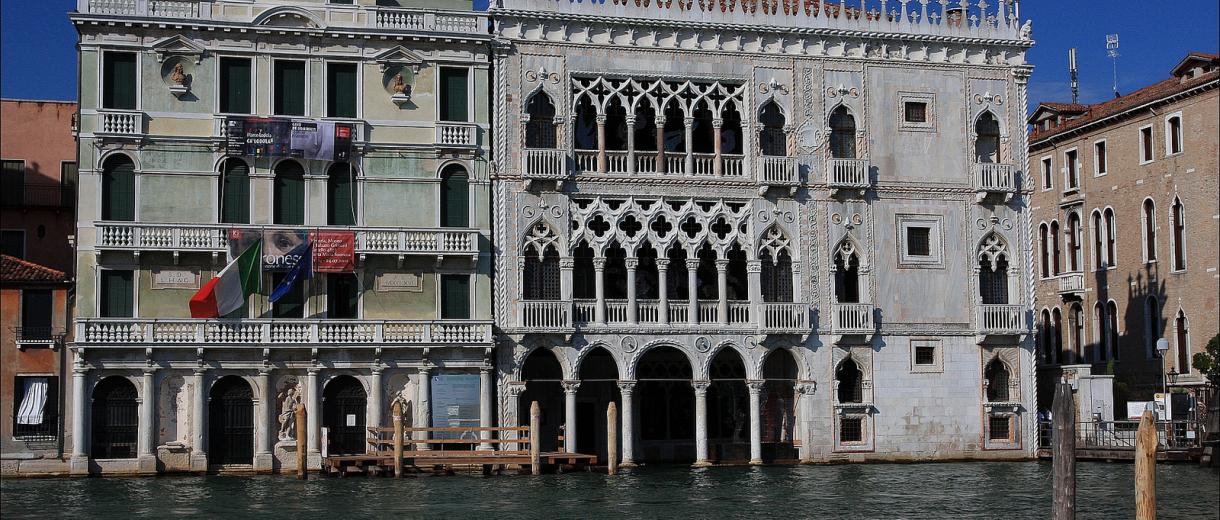Ca' d'Oro
Facing the grand Canal, the most important water way of the city, the building was commissioned by the Venetian merchant Marino Contarini between 1421 and 1440. the works were made by Contarini Himself and the building has more than one Architect.
Some of them were Marco d’ Amedeo, the sculptor Matteo Raverti from Milan, the Venetian Giovanni and Bartolomeo Bon and the French Jean Charlier.
Zanne de Franza decored the façade (big part of the work is no longer existing), during the years the building has been restructured and modified specially inside to suite the inhabitants needs, and lately by the owners.
To the end of XIX century the owner Alessandro Trubetzkoi entrusted Giovanni Battista Meduna
To a restore that massively changed the palace both outside and inside.
In 1894 baron Giorgio Fianchetti who aimed ; to bring the palace to ; the primitive look to make a permanent exhibition for his art operas, in 1906 he signed an agreement with the Italian state in which he promised to donate the palace in exchange of the payment of the works, on January 18th 1927 the museum, in memory of baron Giorgio Fianchetti passed in 1922, was inaugurated.
The name of the building is inspired to the decoration of its façade (now completely gone) originally was almost entirely covers in gold and colours that made of it one of the best example of gothic architecture in Venice.
The asymmetry characterizing the façade is due to the small room left at the moment of the building (there is only one Grand Canal !!) so the palace has not to be considered unfinished., the resemblance with the dogi palace is evident, notice the window shape on the first floor and the battlement dressing crowning the building.
The inner plan is C shaped articulated around an open air inner courtyard, in the center there is a big watherhole in marble “ broccatello” made in 1427 by Bartolomeo Bon.
Worth to be mentioned the marble floor of the archway on the ground floor (personally designed by Fianchetti), inspired to the medieval floor of the church of the Venice lagoon and the decoration of the XII and XIII century, marble of ; various and precious sorts, known for their rarity since the Roman era, were used.
Today this magnificent Venetian palace facing the Grand Canal is still a museum and host the Fianchetti collection, those are flanked with some public collections from where ; most of the bronze and the sculpture comes as well many paintworks from Veneto land and flamingos.
Betwenn the most important operas are the “ San Sebastiano” by Andrea Mantegna, the “ Venere allo Specchio” by Titian, landscape by Francesco Guradi, the “ Venere dormiente” by Paris Bordone, and big portions of frescos cominc form the façade of “ Fontego dei Tedeschi”, as well other exhibition rooms, the museum host various laboratories for the retauration of Art operas ;





